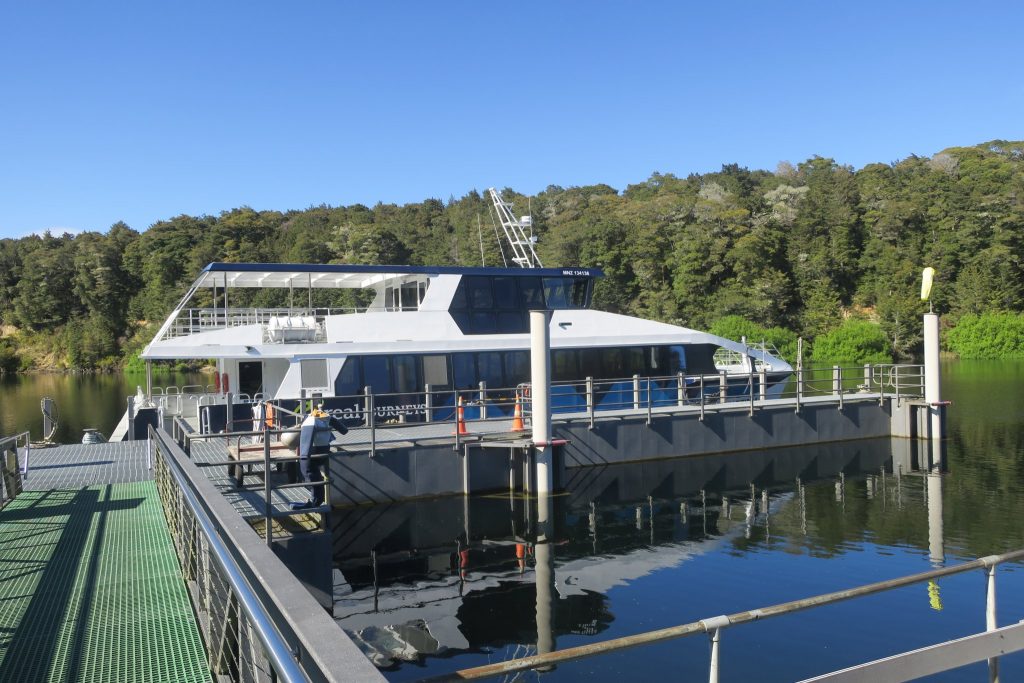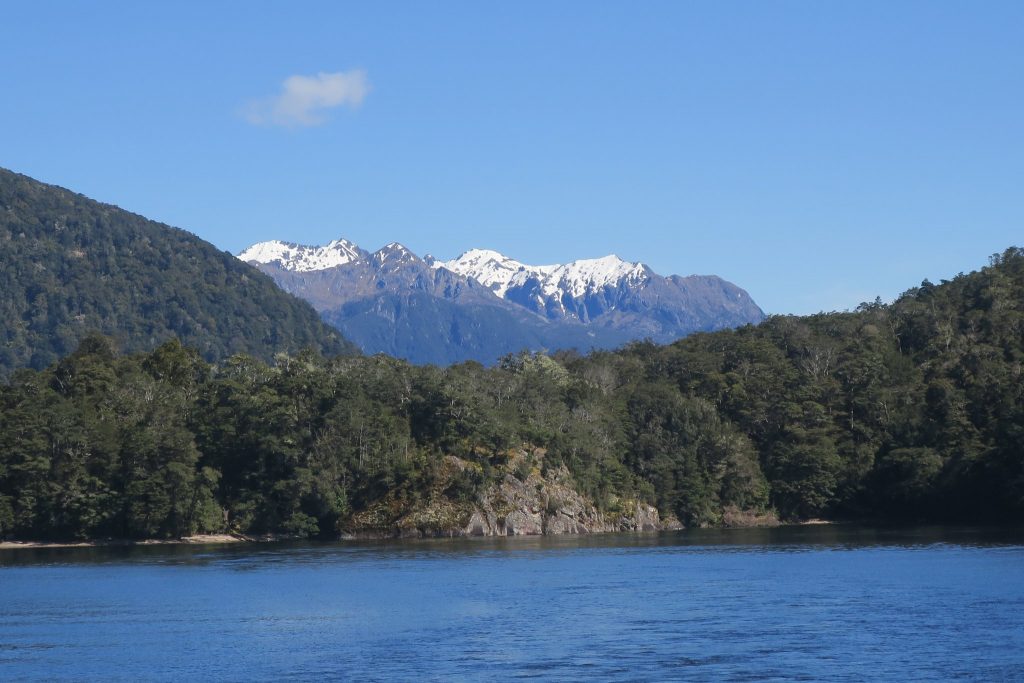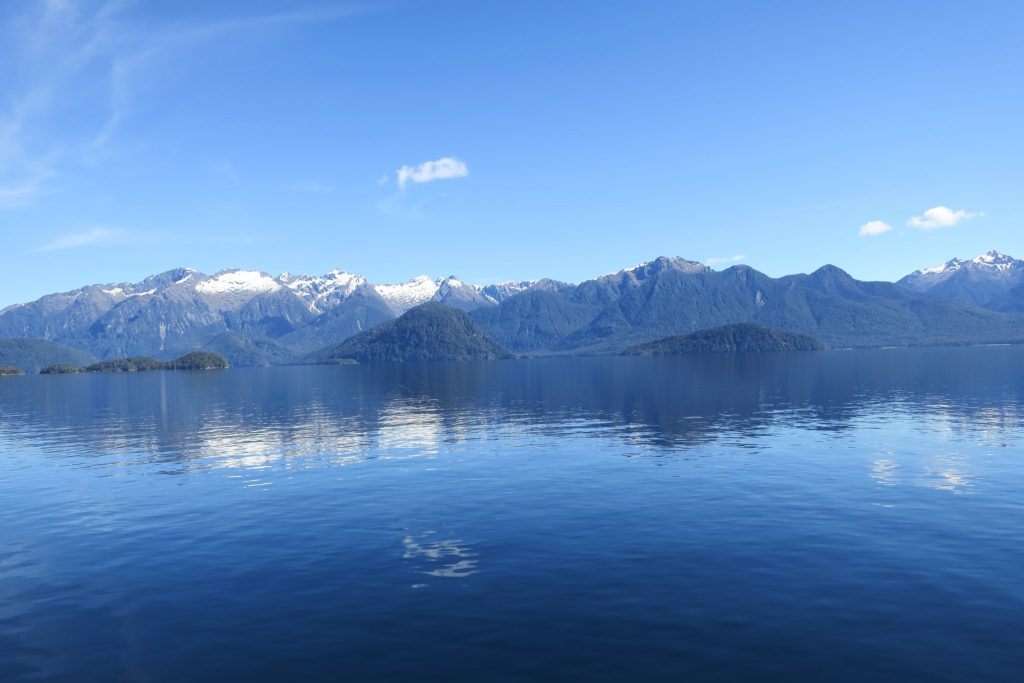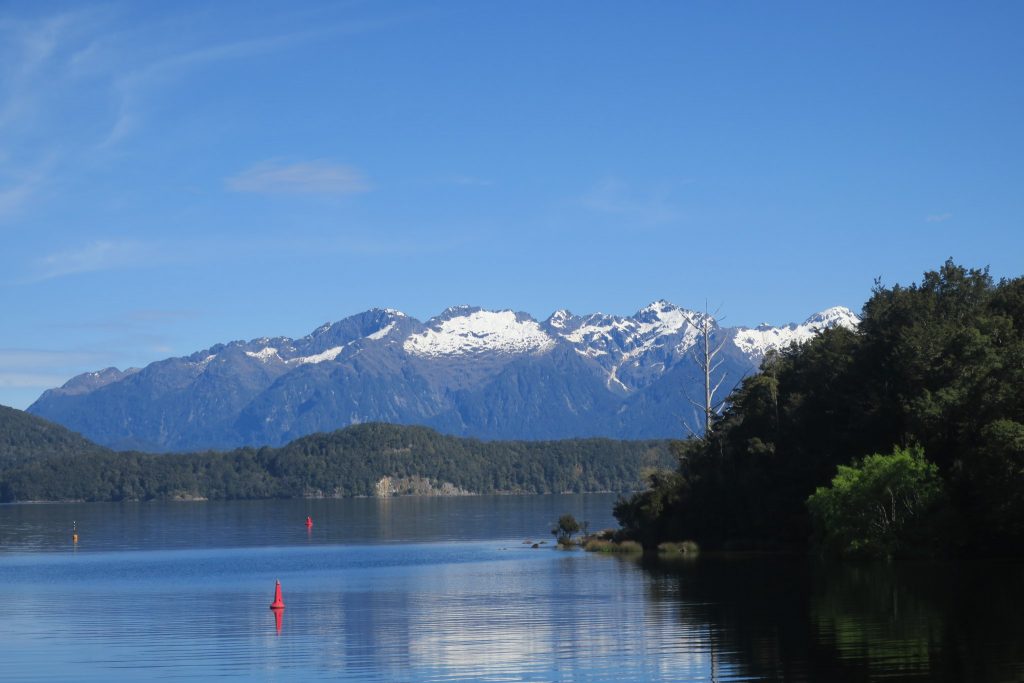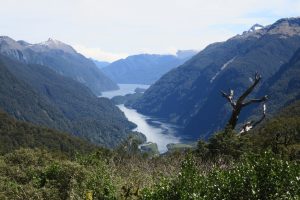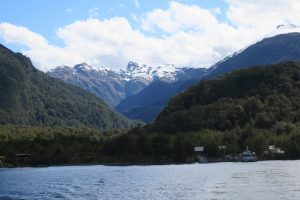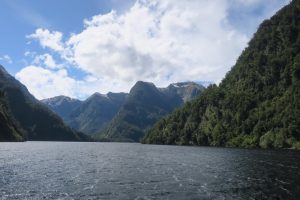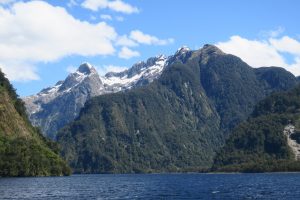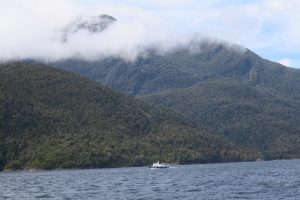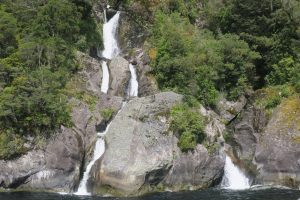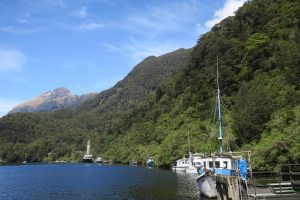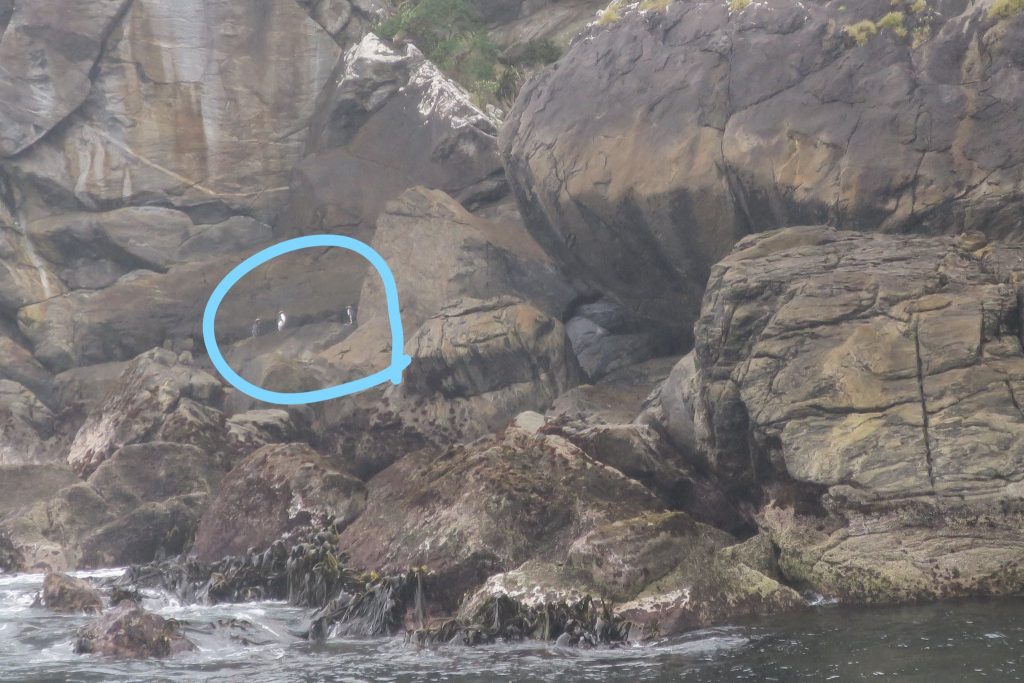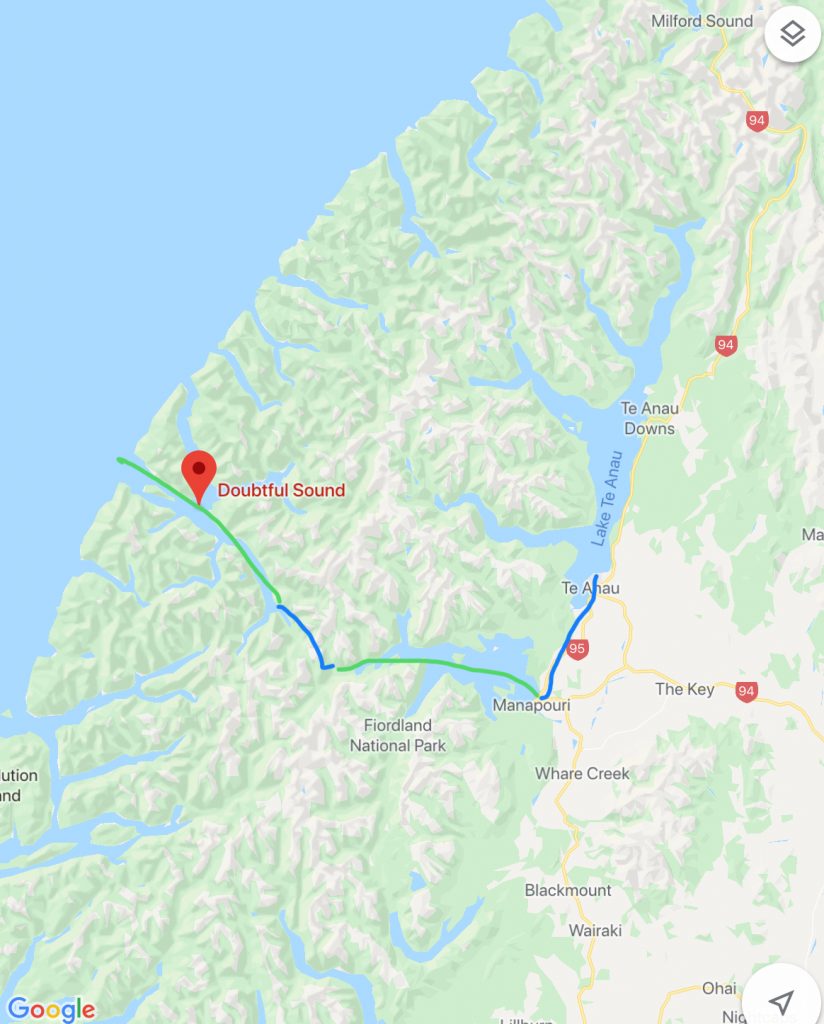Today we are going to Doubtful Sound. It was a beautiful day and the rain that was predicted did not materialize. We were picked up by a bus at the campground which took us to Lake Manapouri, about a 20 minute ride.
We have seen signs about banning 1080 and didn’t know what that meant. A lady on the bus and the bus driver explained it. The only mammals indigenous to New Zealand are bats, all the other mammals were introduced by humans throughout the islands 800 year recorded history. Today they have issues with over population of many of the mammals humans introduced; rabbits, weasels, rats, deer, just to name a few. The government is trying to manage the situation by dropping a poison called 1080. Many people want the government to stop using it because it indiscriminately kills everything that touches it. There’s also concern it will poison the water supply.
Here’s the story of one mammal that was brought to New Zealand. Deer were brought to here in the late 19th century for sport. They spread rapidly as they had no predators and plenty of food. Starting in 1920 the government employed cullers to shoot the deer because they were damaging pastures, young exotic trees in plantations and native forests. Eventually the farmers realized they could capture the deer and raise them for vension (I think most of the vension is exported to China). So then they started hunting from helicopters. When a deer was spotted they would jump out, wrestle them to the ground and then transport them to a farm. There are obvious problems with that methodology so they developed a dart that they shot at the dee. The dart contained a net that entangles the deer and provides the means to capture and transport them to the farms. Today the farmers have enough deer to sustain their herds so the deer population is once again exploding.
Back to our day, we got on a boat which took us across Lake Manapouri. Here are pictures from Lake Manapouri.
Next step, onto a bus which traveled through the Fiordland National Park to Doubtful Sound. The only way to access the road we traveled on was by boat. It was built in the 1960’s to transport equipment to the edge of Lake Manapouri where they were built a hydro power station. Here are some pictures from a scenic stop on our bus ride.
Once we reached Doubtful Sound we got onto another boat which took us out into Doubtful Sound. We checked out some of the “fingers” along the way. The trip out to the end of the sound, where it meets the Tasman Sea, took about an hour and a half. We had ordered box lunches which we enjoyed en route.
We saw quite a few waterfalls both from the bus and from the boat. If it had been raining, which it does on two out of every three days, we would have seen more, but we were thankful for the glorious weather. The weather was great for most of the day but as neared the Tasman Sea it became cloudy, foggy and it started raining. Fortunately the bad weather didn’t enter the sound and our return trip was sunny and warmer. Here are pictures from our Doubtful Sound boat trip.
While en route a guide described the area. The reason Doubtful Sound is named as such is that when Captain James Cook came to the mouth of fjord he observed that the wind was always blowing west. He knew he could sail into the sound but was DOUBTFUL that he could sail out. Therefore he never went into the sound and wrote the word Doubtful on a the chart he created. In this area they have tree avalanches. What’s a tree avalanche? In much of Fiordland, as the area is called, the forest clings to steep faces of hard rock covered only by a think layer of rich, peaty humus and moss. The roots of the trees anchor into the roots of other trees so there is a huge network of roots holding the trees onto the rocks. Occasionally the trees grow too tall and the fragile root system can no longer sustain their weight. Once one tree goes it rips through the root network and a number of trees are ripped from the landscape, ie., a tree avalanche.
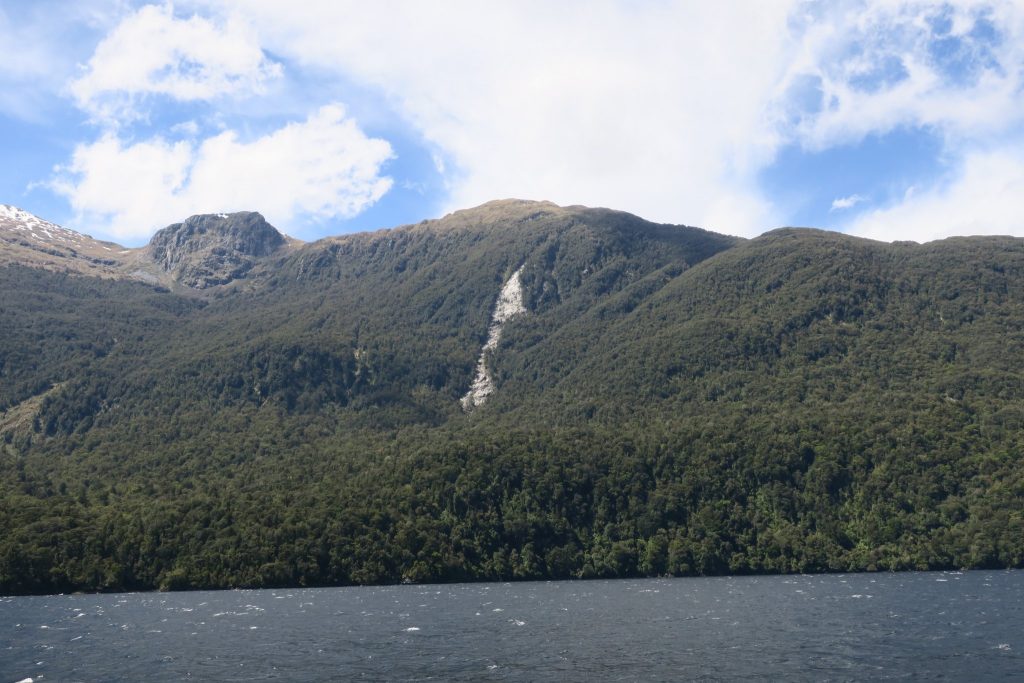
We saw fiordland crested penguins, but only at a distance. They were on rocks on an island just on the outer edge of the fiord. Their population is declining due to various predators, dogs, cats, rats and weasels, all mammals introduced by man. They are also vulnerable to human disturbance, fleeing nests and leaving chicks exposed to predators.
On another nearby island New Zealand fur seals were lounging on the rocks. We learned that female seals get pregnant 8 days after giving birth to the last seal, so basically they are perpetually pregnant!
It rains all the time in Doubtful Sound, in fact they get over 26 ft of rain in an average year. The rain travels down the hill, picking up tannins on the way and turning the water brown. The water is less dense than the salt water so it sits on top and filters out the sunlight. Therefore many deep water species grow in comparatively shallow water.
At the end of our Doubtful Sound trip we returned to Te Anua the same way we came. In the course of the day we took four bus rides and three boat rides. Wow! The trip to Doubtful Sound was definitely a highlight of our New Zealand trip. Here is a map of our travels today, Blue is by bus and green is by boat.
We were dropped off that the booking center and booked a trip for tomorrow morning to see the glowworms that live in a near by cave. Of course on the way back to the campground we had to stop by the grocery store.

